When it comes to the English language, hundreds of thousands of words exist to describe people, places, things, and actions. Did you know that “E” is the most commonly-used letter and that the most number of words begin with “S” than any other letter?
The letter “X” proves interesting when discussing its role in phonics and history. In fact, in the 1755 version of Johnson’s Dictionary, X got left out entirely. At that time, experts didn’t believe any word began with the letter “X.” It was a fair assumption since common X-starting words like xylophone or xenograft didn’t make it into the common lexicon of English speakers until the nineteenth century.
With so few words and proper nouns starting with “X,” do you know the countries, cities, and regions of the world that start with the letter “X?” Keep reading to discover a list of populous places that’s name starts with the letter “X!”
Do Any Countries Start with the Letter X?
There are currently no independent countries that start with the letter X. Of the globe’s 195 independent and sovereign countries, zero have a name that starts with the letter X. However, many of the cities or regions in the world that do start with the letter X lie in China.
Why?
The sound an X makes in English mirrors closely to a popular sound in the Mandarin language. It also makes sense based on the pinyin system — a system that spells Chinese vocabulary with the Latin alphabet (otherwise known as romanization).
13 Places that Start with the Letter X
Discover more about 13 different places around the world that start with the letter X.
Xiamen (Fujian Province, China)

Xiamen operates as a key seaport today with a plethora of historical sites to explore.
©lkunl/Shutterstock.com
Located on the banks of the Taiwan Strait, Xiamen is a sub-provincial city in the Fujian Province with six districts and a large population. As of 2022, the city had 5.3 million people living in it. The population alone is large, but the city ends up serving double — nearly 10 million people use this metropolis for trade, business, life, and more.
Xiamen’s history stretches back to 282 AD, when the Jin, and later the Later Tang, organized the land into a county. Throughout its past, Xiamen operated best as a key seaport to facilitate trade between nations. However, the success of British tea plantations in India led to a sudden export economy collapse in the twentieth century. The “Chinese economic miracle,” also known by its official name as the Opening Up Policy, catapulted Xiamen back to the spotlight. In the early 1980s, the city opened itself to foreign investment and became known as one of China’s original special economic zones.
Today, Xiamen is a hotbed of commerce and industry. Culture abounds, the city hosts 10 universities within its limits, and tourists flock from all over the world to hike, bike, and walk the city’s sights.
Xi’An ( Shaanxi Province, China)
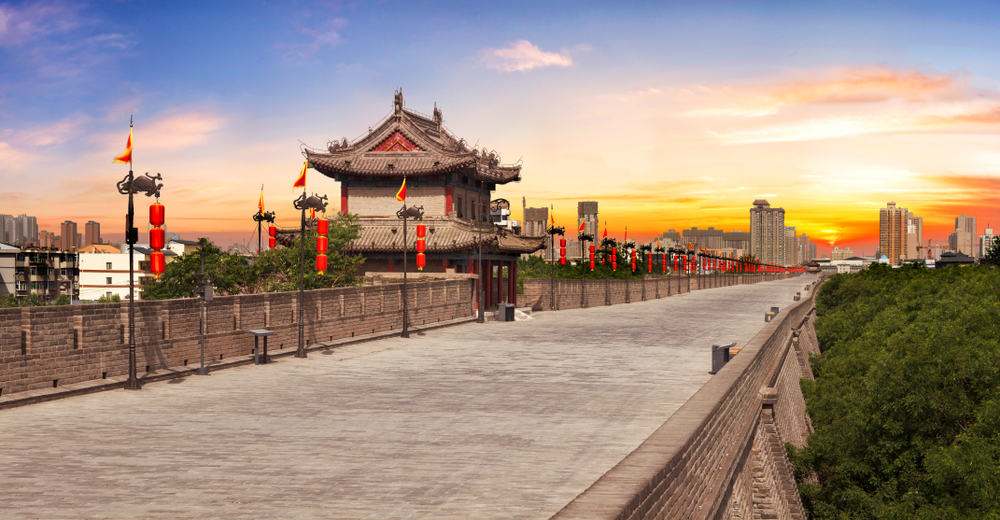
The City Wall of Xi’An is one of many historical sites tourists can walk in the ancient city.
©mapman/Shutterstock.com
With a population of nearly 13 million people, Xi’An is one of Western China’s most populous cities. It has become an impressive city in its own right after thousands of years of storied military and political significance.
Not only have archeologists found human remains (the Lantian Man) and remains of neolithic Villages in Xi’An, but it also served as one of China’s “Four Great Ancient Capitals.” The dynasties of the Western Zhou, Western Han, Sui, Northern Zhou, and Tang all used the city as a capital during their reign. Furthermore, it remains home to two UNESCO World Heritage Sites: the starting point of the Silk Road and Emperor Qin Shi Huang’s Terracotta Army.
Today, Xi’An functions as a hub of modern Chinese industry and entertainment. Tourism abounds, thanks to the city’s many ancient and historical sites, while Xi’An cuisine delights travelers from across the world.
Xiangtan (Hunan Province, China)

Xiangtan is known as the Lotus City for the many lotuses that bloom in it.
©pzAxe/iStock via Getty Images
The powerhouse prefecture-level city of Xiangtan ranks among the top 500 cities in the world by scientific output alone. It’s also a hometown for key leaders throughout Chinese history, including Mao Zedong (who established the People’s Republic of China) and the entire Qing dynasty.
The Lotus City has a population of close to two million as of 2022. Tourists to the area have hundreds of attractions to choose from — including the Guansheng Temple, Orange Island, incredible eateries, and innovative hotels.
Xining (Qinghai Province, China)
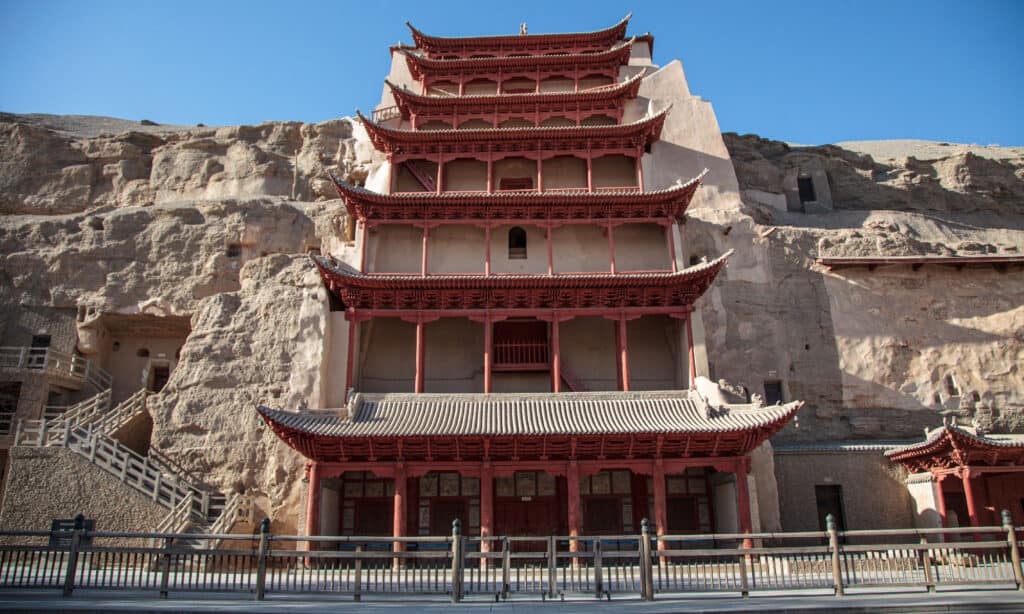
The city of Xining was part of the Northern Silk Road, connecting the world to products like timber.
©Sergei Mugashev/Shutterstock.com
Xining, also known as Sining, remains the largest city on the Tibetan Plateau. It has a unique blend of Islamic and Chinese cultures, holding heavy significance for Buddhists with attractions like the Dongguan Mosque and Ta’er Monastery.
The city has thousands of years of history behind it, with transportation, trade, and religion as the main sources of popularity. It served as a hub along the Northern Silk Road for much of the past, allowing commodities like timber, wool, and salt through to the rest of the world.
Today’s amenities and attractions in Xining include distinct Chinese and Islamic-inspired food dishes, zoos, cultural museums, mosques, and monasteries.
Xintai (Shandong Province, China)

Researchers found fossils in Xintai that prove
Homo erectuslived in the area five million years ago.
©Puwadol Jaturawutthichai/Shutterstock.com
Xintai plays a significant role in human history: scientists and archivists have found human teeth fossils that prove Homo erectus lived in the area of Xintai’s Wuzhutai village over five million years ago. Archeologists have also found primitive social sites.
Emperors across dynasties used Xintai as a site for ceremonies, religious services, and royal activities. In addition, during the 1600s amid the Qing dynasty, the emperor-commissioned road made Xeintai a center of transportation and trade between northern and southern regions.
Today, Xintai remains rich in minerals, with trillions of tons of coal, quartz, limestone, and clay deposits. It serves as a hub of mining and energy corporations, with a friendly local atmosphere and a thriving economy.
Xinxiang (Henan Province, China)
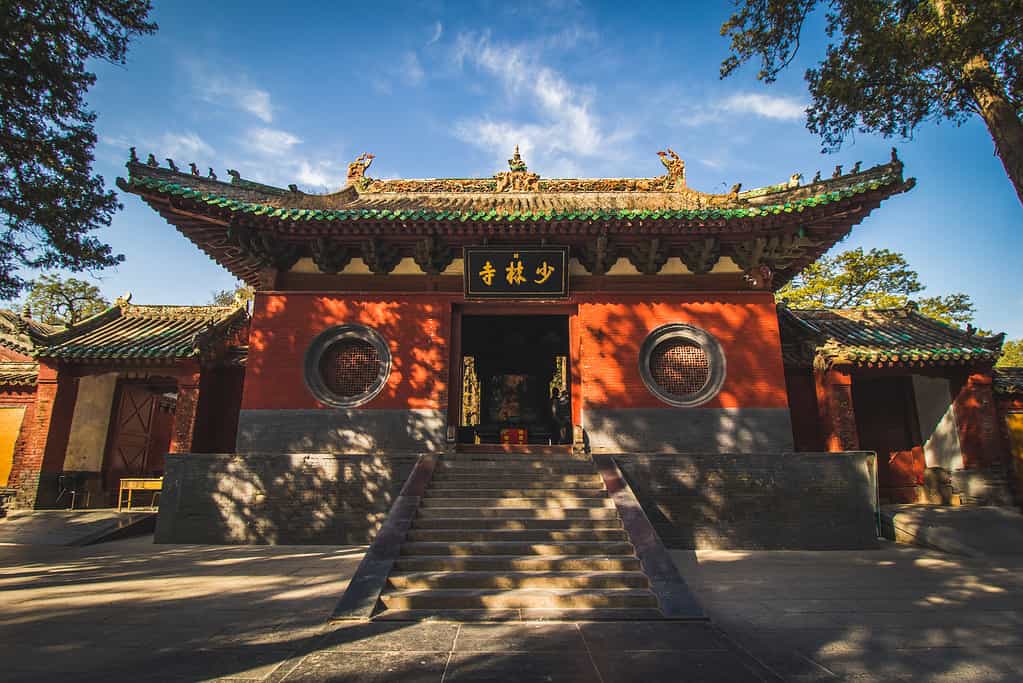
The Henan Province is home to the site of defeat for the Shang Dynasty, where the Zhou Dynasty overthrew it.
©BenKow/iStock via Getty Images
Dating back to the Sui Dynasty in China (which reigned between 581 and 618 CE), Xinxiang served as the battle site where the Zhou Dynasty overthrew the Shang Dynasty. However, after the significant battle, the city remained largely agrarian until the 1950s. Then, it began to grow in industrialization and population. Today, the prefecture-level city has an astounding six million people living in it. Attractions include the Mausoleum of King Lu and the Xinxiang Museum.
Xinzhou (Shanxi Province, China)
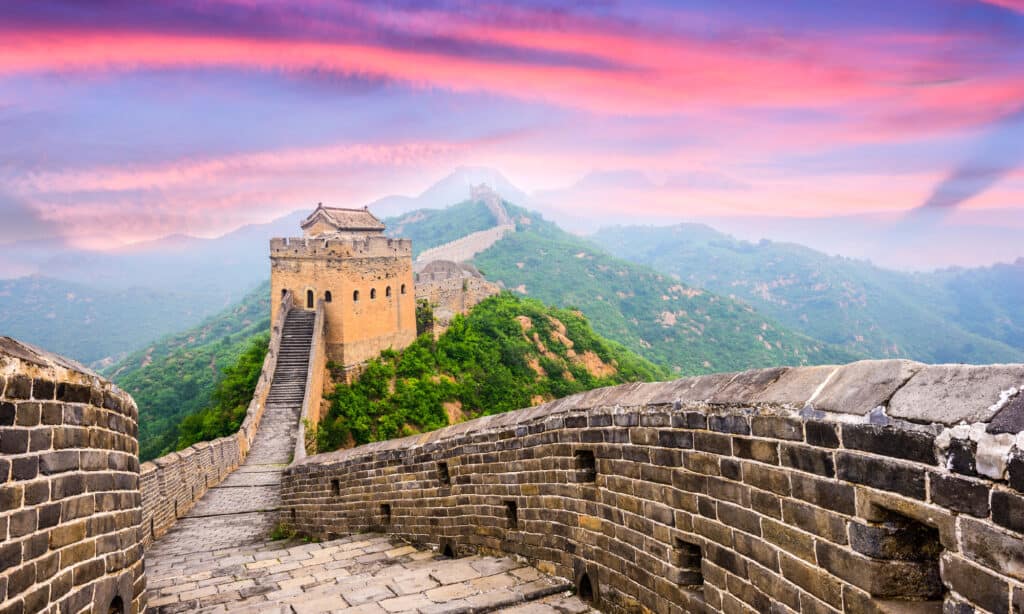
The Yanmen Pass is a historic access point on the sprawling Great Wall of China.
©iStock.com/SeanPavonePhoto
Located in the People’s Republic of China, Xinzhou has an estimated total population of around 405,000. The city’s mountainous terrain lends itself to tourism for its natural beauty, with mountains, basins, and forests covering much of the land. The city even has four National Forests.
Xinzhou’s claim to fame, however, doesn’t lie in its geography, but in its historical landmarks. Mount Wutai and Yanmen Pass, as well as Xinzhou Ancient City, bring thousands of visitors a year to step back in time and live among the samurai and soldiers of old. The city is also just a half-day train ride to Beijing; a close trip considering China’s sprawling landscape.
Mount Wutai is a sacred Buddhist site located in the city. Known also as the “five-terrace mountain,” Mount Wutai remains one of only four sacred Buddhist mountains in China. Yanmen Pass, a mountain pass on the Great Wall of China, used to facilitate access between Shanxi and Eurasia. It earned the nickname “Gild Goose Gate” because no warbird could fly over it from north to south during all the bloody battles the gate had seen since its inception. Finally, Xinzhou Ancient City is a scenic spot that tourists can walk through to experience history from as far back as the Eastern Han Dynasty.
Xai-Xai (Gaza Province, Mozambique)
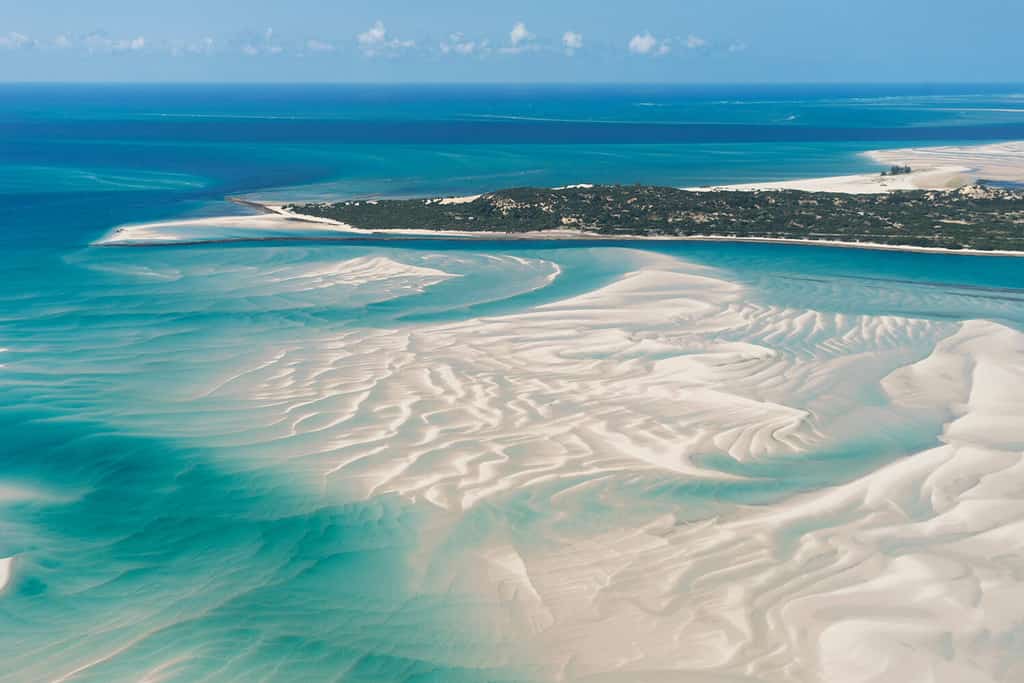
The beach in Xai-Xai draws thousands of tourists a year to its white sandy shores.
©Maddy Settle/Shutterstock.com
Known for its pristine beach, uneroded thanks to the coral reef just offshore, Xai-Xai in Mozambique remains a bustling, busy beach town. With a population of over 127,000 as of 2022, it’s one of the country’s more populous cities.
The city only recently received its X-ceptional name. Known as João Belo until its independence from Portugal in 1975, Xai-Xia was first developed as an overseas economic venture. The port remained a vital space for grading, agriculture, and industry — with the most important produce being cashews and rice.
Today, many tourists seek out the sandy shores of Praia do Xai-Xai. For most of its existence, tourism remained a crucial part of Xai-Xai’s economy. However, after gaining independence from Portugal, the city leaned into its natural beauty and began investing more in attractions, hotels, and leisure activities to support one of its most significant economic sectors.
Xojeli (Karakalpakstan, Uzbekistan)
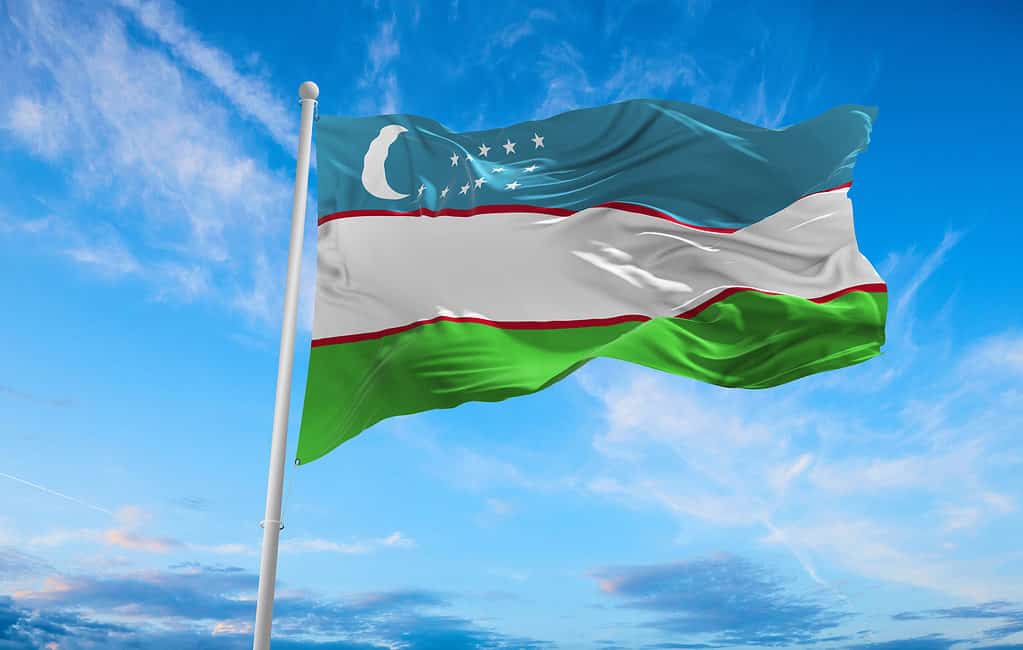
Residents of Xojeli consider themselves more similar to Kazakhs than Uzbeks.
©Maxim Studio/Shutterstock.com
While the city of Xojeli in Uzbekistan isn’t small with a population of 67,800, the city doesn’t have much of a presence on a historical or national scale. It serves as the seat of the Xojeli District and has a railway station.
Xojeli is the only city in its district, which also has one smaller town and a handful of rural communities.
The Republic of Karakalpakstan, or Karakalpakstan, is an autonomous republic — sort of like a city or state. While it lies within the limits of Uzbekistan, many residents consider themselves more akin to Kazakhs than Uzbeks based on their culture and language traditions.
Xalapa (Veracruz, Mexico)

The Xalapa Museum has stunning Aztec and ancient art, like
El Señor de las Limas, the largest known greenstone sculpture.
©
In 1804, a German polymath visited the city and nicknamed it the City of Flowers. The nickname stuck, in part because of its beauty and nature, and because an old legend holds that the world’s most beautiful woman, la Florecita or “Little Flower,” was born in Xalapa.
The native Nahuatl named the city xālli, or “the spring in the sand.” In earliest records, the Totonacs founded what would later become Xalapa along with two other groups of people — the Toltecas and the Teochichimecas — in the fourteenth century. The fifth Aztec Emperor Mectezuma Illhuicamina conquered the small village before Hernan Cortes and other conquistadores overtook the land and re-settled it. Between the 1700s and the 1900s, the city of Xalapa became increasingly important to both Mexico and the United States. It served as a trade city, a base of military operations, and even a battlefield in the Mexican-American War.
In modern times, Xalapa has a thriving arts and music scene. Many performers choose to put on shows or displays at night, especially if the day coincides with an important holiday. Artists also celebrate the indigenous civilizations of Zalapa through sculptures, art, festivals, food, and more.
Xochimilco (Mexico City, Mexico)
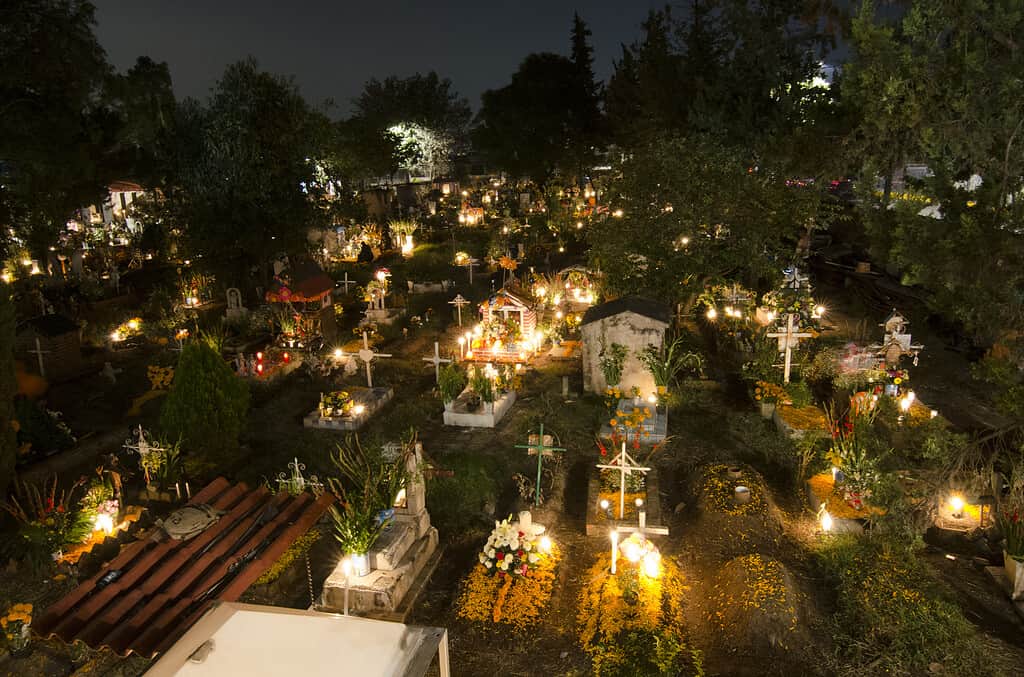
The Cemetery of San Gregory of Acapulco in Xochimilco, Mexico City has religious-based festivals, like the Celebration of The Day of the Dead.
©BeteMarques/iStock via Getty Images
While not a city, the borough of Xochimilco is actually a recognized UNESCO Heritage Site because of its significant role in helping the area to develop its architecture and support life with its lake. The Mexican government terms the borough as one of 21 separate Barrio Magicos to attract tourism to Mexico City. The population of Xochimilco in 2020 was just over 442,000 residents.
Named with inspiration from the native Nahuatl people, Xochimilco means “flower field” in their language. The Aztec glyph of the borough has two flowers, side-by-side, to denote the region’s many flowers and crops. Historians find the first mention of Xochimilco around 900 BCE, but hunters and gatherers may have settled in farming communities before that.
Today, the region relies on religion to create a large part of its culture. Xochimilco remains religiously diverse, with 36 non-Catholic congregations in the small borough. Urbanization has brought religious festivals rooted in tradition to the forefront of annual community events, with celebrations hosted by mayordomos, or volunteers who put on these events.
Xanthi (Thrace, Greece)
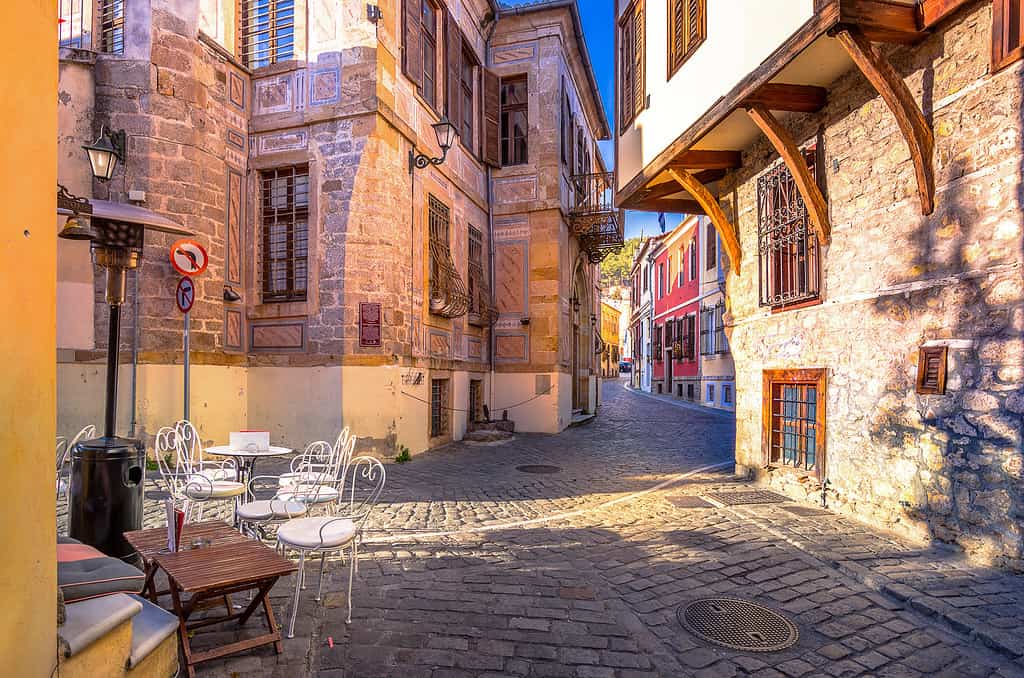
The old town of Xanthi, Greece is home to many small shops and boutique restaurants.
©Gatsi/iStock via Getty Images
Located in Thrace and housing a population of just over 56,000, Xanthi in Greece is a uniquely designed city for travel lovers to explore. Its old-world charm blends with the progressive commercialization of the Western world, making it a haven for foodies, adventurers, theater geeks, and more.
Some historians believe the name of the city came from the gods, as many Greek cities did. Xanthi was an obscure daughter of Oceanus and Tethys — and the name of the Amazon some ancient Greeks believed to rule the island before them. The earliest mention of the city is in 1 BCE, though it’s only by one historian (Strabo). The next significant historical mention comes in the third century CE when the Ottoman Empire moved to pull Xanthi under its control.
Thousands of years later during the eighteenth century, Xanthi became well-known for the quality of its tobacco. Trading tobacco led to the city’s prosperity — but the city faced challenges during both the Balkan and World Wars when it came under attack.
Today, Xanthi has a rich and diverse culture with a varied population from the many groups who held the city in their possession. It’s known as a “city of a thousand colors,” celebrating diversity through unique attractions and annual cultural festivals.
Xenia (Ohio, United States)

A devastating tornado in Xenia, Ohio devastated the town in 1974.
©iStock.com/RomoloTavani
This is the largest city in the United States that has a name starting with X. Named for the Greek word xenia meaning hospitality, the city of Xenia in Greene County, Ohio, has a population of around 25,000 inhabitants. It’s the third-largest city in the county and is located in the southwest corner of the state.
Joseph Vance surveyed 2,000 acres of land and laid out a town on 257 acres of it, thereby founding Xenia in 1803. He bought the land for $250. Just a year later in 1804, businessman William Beattie opened a tavern, which became the unofficial town center of community affairs. Soon after the tavern’s construction and opening, homes, schoolhouses, post offices, and mills began to pop up in the surrounding area.
Unfortunately, Xenia has had devastating tornadoes. In 1974, an F5 tornado ripped through the town. It killed 34 people and left over 10,000 homeless. In 1989, an F2 tornado caused millions in damage but no one lost their lives. In 2000, an F4 tornado killed one person, displaced 100, and took a path parallel to the 1974 disaster.
X Marks the Spot
From the United States to China, cities across the world have uniquely named cities that start with the letter X. The next time you plan a trip abroad, consider visiting a city or town with an X-starting name to be in one of the few places in the world with such a different name!
Thank you for reading! Have some feedback for us? Contact the AZ Animals editorial team.








